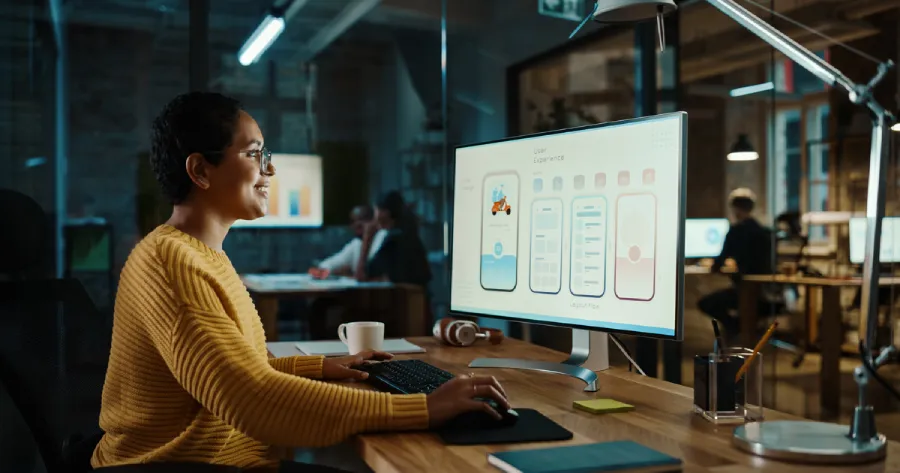The Power of Shift Left: Integrating Accessibility in the Design Stage
- 27 April, 2023
- Reading Time: 3 mins
What is the Shift Left Mentality for Accessibility?
‘Shift left’ is a term that has come about from the evolving practice of considering and implementing accessibility earlier in the development stages of a product. The overall goal of shifting left is to improve the quality and value of a product while reducing costs and time to market. It reduces cost and time as it tackles problems earlier in the product life cycle, and reduces the risk of non-compliance. As there is more awareness of accessibility and designing for accessibility, the practice of ‘shift left’ is highlighted as a proactive strategy. Studies show that approximately 67% of accessibility concerns can be resolved in the design stage. These statistics allow us to see how beneficial and how much we can actually implement in the earlier stages.
‘Shifting left ‘also allows developers to engage with accessibility specialists at an earlier stage, which also allows developers to prevent problems or changes that would typically arise later on in the product stage. Keeping accessibility in mind is a responsibility everyone has, and instilling this value earlier on allows more people to assess and augment the work.
Embracing Shift Left for Accessible User Experience Design
Design is one of the most important aspects of a product. It determines the impression of a product and how a user interacts with it. If it is poorly designed and hard for users to use, chances are that there will be someone else doing it better that is more clear and engaging for the user.
User experience design focuses on creating a meaningful experience through testing and iteration. There are many things that designers take into consideration during this phase. For example, an application that is more focused on children versus an application that is more focused on adults will have different user experiences. Some major differentiating factors would be that an application targeted to children would have brighter colors, larger fonts, and more engaging pictures. As for adult users, the design would be more intuitive and direct and would avoid animation and sound. When the product has a meaningful user experience, it allows users to have a more engaging experience that will incline them more to returning or becoming customers. The main focus areas for user experience design are user needs and ensuring user satisfaction. This satisfaction is developed through a long process that includes user personas, user research, testing, wireframes, and more. Using the shift left practice, it allows developers to go through this process at the beginning stages, which saves time and money that avoids future conflict.
Designing with Accessibility in Mind
To understand the impact of shift left, it is important to understand the value of accessibility in design. When designing a product with accessibility standards, it expands your target audience and reaches more people. With few or no barriers, it maximizes the amount of people your product can reach, in terms of understanding, using, and valuing the product. Making a product accessible conveys that all disabilities are accounted for. This includes cognitive, visual, auditory, motor, and speech disabilities.
When shifting left and initially keeping this in mind, it saves time to break barriers for potential users or customers. In addition, this helps promote inclusivity and diversity, enhancing the user experience for all users. Not only for the market value, but for fundamental values, accessibility should not be an afterthought, but rather one that is vital and the base of all designs.






